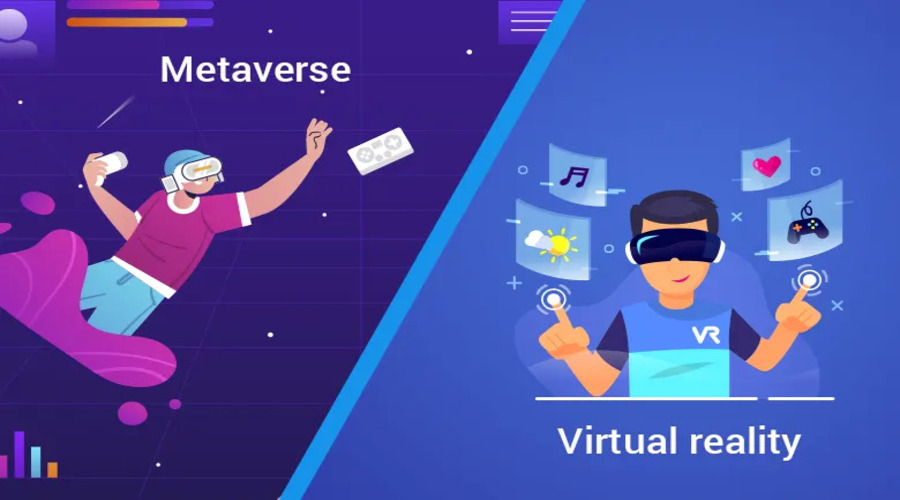The Evolution of Virtual Reality and its Impact on the Metaverse

Virtual reality (VR) technology has evolved significantly over the past few years, and it has begun to make a significant impact on the metaverse. In this article, we will explore the history of virtual reality, its current state, and its potential impact on the metaverse.
Introduction to Virtual Reality
Virtual reality is an immersive computer-generated environment that simulates physical presence in a virtual or imaginary world. The user can interact with the virtual environment through electronic devices, such as headsets or controllers. The concept of virtual reality was first introduced in the 1960s, but it was not until the 1990s that the technology became widely available.
The Evolution of Virtual Reality
The First Wave
The first wave of virtual reality technology was focused on gaming and entertainment. In the 1990s, companies such as Nintendo and Sega introduced gaming consoles that used VR technology to provide a more immersive gaming experience. However, these early VR systems were expensive and not very effective, which limited their popularity.
The Second Wave
The second wave of virtual reality technology began in the early 2010s with the introduction of affordable VR headsets, such as the Oculus Rift and the HTC Vive. These headsets provided a more realistic and immersive experience than the previous generation of VR technology. In addition to gaming, the second wave of VR technology has also been used in areas such as education, healthcare, and military training.
The Third Wave
The third wave of virtual reality technology is currently underway, and it is focused on the metaverse. The metaverse is a term used to describe a virtual world that is shared by millions of users, where people can interact with each other and with virtual objects in real-time. The metaverse is not a single platform, but rather a collection of interconnected virtual worlds that are accessed through VR headsets or other devices.
The Impact of Virtual Reality on the Metaverse
Social Interaction
One of the most significant impacts of virtual reality on the metaverse is social interaction. In a virtual world, users can interact with each other in ways that are not possible in the physical world. Virtual reality allows users to create avatars that represent them in the virtual world, and they can communicate with other users through voice or text chat. This has the potential to revolutionize social media and online communication.
Education and Training
Virtual reality has the potential to transform education and training. In a virtual environment, students can explore complex concepts and ideas in a more immersive and interactive way. Virtual reality can also be used to simulate real-world scenarios for training purposes, such as military or emergency response training.
Business and Commerce
Virtual reality has the potential to revolutionize business and commerce. In a virtual world, users can visit virtual stores and interact with virtual products in ways that are not possible in the physical world. Virtual reality can also be used for virtual meetings and conferences, which could potentially reduce travel costs and increase efficiency.
The Advantages of Virtual Reality in the Metaverse
Virtual reality technology has several advantages that make it particularly well-suited for the metaverse. These advantages include:
- Immersion: Virtual reality provides a high level of immersion, which is essential for creating a sense of presence in the metaverse. This immersion allows users to feel as if they are truly present in the virtual world, which can enhance the overall experience.
- Interactivity: Virtual reality technology allows users to interact with the virtual world in a way that is not possible with other technologies. This interactivity can create a sense of agency and control, which can increase engagement.
- Personalization: Virtual reality allows users to create custom avatars that represent them in the virtual world. This personalization can enhance the sense of identity and ownership, which can increase user engagement and investment in the metaverse.
Challenges Facing Virtual Reality in the Metaverse
While virtual reality technology has several advantages for the metaverse, there are also several challenges that must be overcome. These challenges include:
- Cost: Virtual reality technology can be expensive, which may limit its accessibility for some users. This cost can also limit the development of virtual reality content and applications.
- Accessibility: Virtual reality technology requires specialized hardware and software, which may limit its accessibility for some users. This accessibility issue can limit the potential audience for virtual reality content and applications.
- Social Interaction: While virtual reality technology can enhance social interaction in the metaverse, it can also create new social challenges. For example, virtual reality can make it easier to hide behind a persona or to engage in harmful behavior without consequence.
The Potential Impact of Virtual Reality on the Future of the Metaverse
Despite the challenges facing virtual reality in the metaverse, there is significant potential for this technology to shape the future of the metaverse. Some potential impacts of virtual reality on the metaverse include:
- Increased Engagement: Virtual reality technology has the potential to increase user engagement and investment in the metaverse. This increased engagement could lead to new and innovative virtual reality experiences and applications.
- Enhanced Communication: Virtual reality can enhance communication in the metaverse by providing a more immersive and interactive experience. This enhanced communication could lead to new and innovative ways of connecting with others in the virtual world.
- New Business Opportunities: Virtual reality technology can create new business opportunities in the metaverse. For example, virtual reality can enable virtual commerce, virtual real estate, and other virtual services that were not previously possible.
The Future of Virtual Reality and the Metaverse
Virtual reality is still in its early stages, but it has the potential to transform many aspects of our lives. In the future, virtual reality technology will become more advanced and be integrated into our daily lives in ways that we cannot yet imagine.
Conclusion
Virtual reality technology has come a long way since its inception in the 1960s. Today, it has the potential to revolutionize many areas of our lives, from entertainment to education to business. As virtual reality technology continues to evolve, we can expect it to have an even greater impact on the metaverse and on our lives as a whole.

I have been in the industry for over 5 years. I know all the latest news and what is going on with different coins. I write about Bitcoin, Ethereum, Litecoin, and more.








